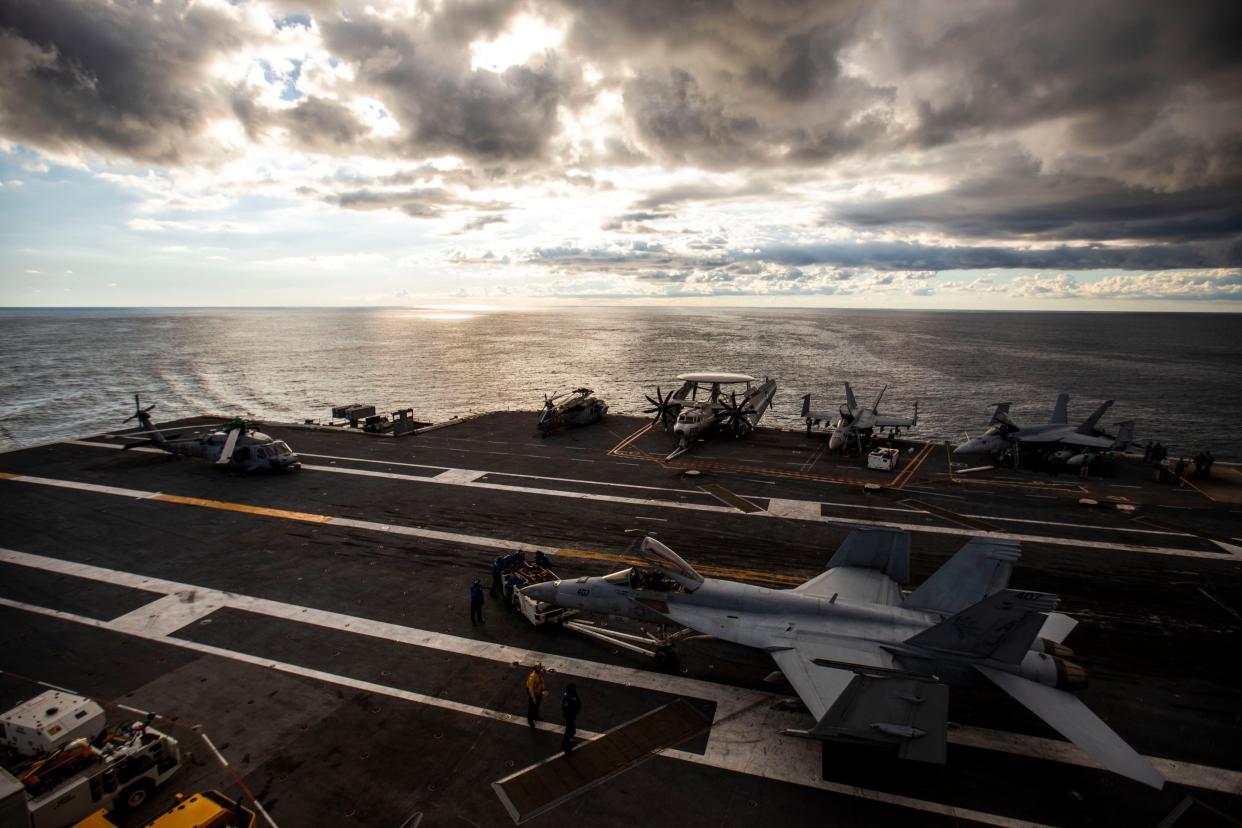Editorial: Hope aboard the Ford

Our hopes and best wishes sail with any ship leaving a Hampton Roads port for deployment, but perhaps never more so than those accompanying the USS Gerald R. Ford as it makes its debut for service.
When it departed on Oct. 4, the newest class of aircraft carrier — unquestionably a triumph of modern engineering — carried not only the brave men and women assigned to its decks and who call this region home but also, in no small measure, the fortunes of the region itself.
That may sound like hyperbole, but it is not. When one considers the economic role Newport News Shipbuilding plays here — both in terms of employment and generated revenue — as well as the size of the Ford-class contract, it’s easy to see how much rides on that island of steel that moved gracefully out of port last week.
Perhaps because they are part of the landscape — a familiar, comforting sight to Hampton Roads residents — it can be easy to lose a sense of perspective about aircraft carriers. Rarely do we stop and marvel at the audacity required to build an enormous floating runway, power station and apartment complex in one entity.
These are among the most advanced machines humans have ever built, requiring tens of thousands of people and costing billions of dollars. That they are constructed here should serve as a source of immense pride, by the men and women who do the difficult, arduous work and for the region they call home.
Carriers also require an enormous investment of time. The U.S. Navy awarded the Ford contract to Northrop Grumman, which then operated the shipyard, in 2008 and the Ford’s keel was laid in 2009, but construction actually began with a ceremonial steel cut in 2005 — meaning 17 years passed between the first step of construction to the ship’s first deployment.
But the time invested in construction is meant to be repaid in the ship’s life. The Ford is expected to be in service for 90 years and the innovations featured in its design are intended to allow the carrier to operate more efficiently and more effectively than any before.
The new class of carrier is also filled with innovation and new technology expected to revolutionize how they operate. The Ford uses electromagnetic launch systems rather than the steam-powered systems utilized by the Nimitz-class carriers, which will allow it to launch more aircraft in a shorter time. Its nuclear reactor generates more power than previous carriers; its weapons and radar systems are more advanced; it boasts a larger flight deck than its predecessors and requires a smaller crew to operate.
All told, the Ford class represents a bold leap forward in design and capability. And it means that American interests, at home and abroad, will be better served by having this ship and future Ford carriers on the water.
Aircraft carriers remain central to the nation’s defense strategy, serving an invaluable role in helping project American firepower virtually anywhere on earth. Even as the nation’s military moves toward unmanned vehicles and other measures to reduce the threat to personnel, carriers will remain an essential piece of the Pentagon puzzle.
That’s reflected in the contract Huntington Ingalls Industries secured in 2019 from the Department of Defense to build the next two Ford-class carriers at a price tag of $14.9 billion. It is a unique arrangement since ships are usually purchased one at a time, but officials with HII and the Navy agreed that securing plans for construction of two ships would reduce the overall cost to taxpayers.
For Hampton Roads, that also provides economic stability, both for the shipyard and its employees and for the subcontractors and other local businesses who depend on ship construction for their livelihoods.
That’s why the whole region has a lot riding on the Ford when it made its exit from Hampton Roads harbor this month and why we’ll be hoping for a successful deployment and a safe return in a few months’ time.

